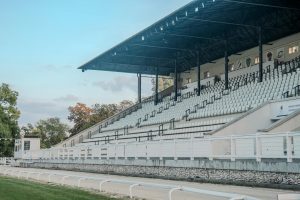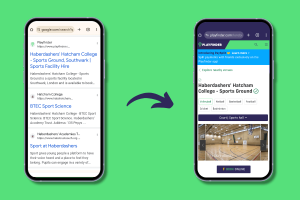The cost of building a 3G football pitch in the UK has increased significantly over the past few years. Due to global macro economic trends, supply issues, import duties, exchange rates, and rising energy prices, the price of raw materials required to build a pitch is the main contributor to the overall increase in cost.

Cost to develop a 3G pitch
With so many cost variables and venue specific implications, asking how much it costs to build a 3G pitch is unfortunately similar to enquiring about the length of a piece of string. However, whether you are budgeting to build your first pitch or want to extend your current sport facility offering, you’ll need a starting point cost estimate. So here is a quick estimate based on Sport England’s latest facility cost guideline. If you are building a standard size football pitch made from 3G astroturf with floodlights and a fence from scratch, you can expect to pay around £1,100,000.
According to Sport England’s facility cost guide, a 3G football pitch of 106m x 70m will cost you anything between £1,075,000 and £1,130,000 depending on the thickness of astroturf (40mm-65mm) your venue requires. This price estimate includes the 3G pitch, fencing, and floodlighting. Keep in mind that these costs are to build and develop these facilities from scratch, meaning that it also includes; an external works allowance (car parks, roads, paths, services connections etc); fees inclusive of project management, site investigation, planning and associated fees.
Extra costs to consider
Life cycle costs
After budgeting for the initial costs of building the facilities, it is important to take annually recurring maintenance costs into consideration. Calculated as a percentage of total project cost per annum, the sinking fund and maintenance costs of a full size 3G pitch is +- 3%. As a percentage of £1,100,000 this comes to £33000 per annum to cover major replacement costs, day-to-day repairs and planned preventative maintenance of the 106m x 70m 3G pitch, fence and floodlights.

Security for gated pitch
In combination with the fencing accounted for in the cost estimate of a new 3G pitch, consider adding an additional layer of security to your facilities. Consider a product such as Lockteq – a digital smart access system that reduces long-term overheads, without sacrificing security. Factor in an additional £3,000 (ex.vat) to the cost of your 3G pitch for the one-off hardware and labour cost of Lockteq.
Booking software
If you decide to go ahead with building your own 3G pitch, make sure to maximise its income generation potential by letting it out. Consider Bookteq, an easy-to-use facility and activity booking solution that’s tailored for sport facility bookings. If want to hire out your facilities, but don’t have the time or the staff resources, consider Bookteam your very own team of venue hire experts, there to support you with; bookings and payments, renewals and debtors, as well as customer service and communication.
Is the cost of a 3G pitch worth it?
While it is not an absolute necessity to have an 3G pitch instead of a grass pitch, it has some major advantages.
1. Unlike grass, astroturf pitches are all-weather, meaning that they can be played on all year round, regardless of what the UK weather has to throw at them.
2. 3G astroturf is much easier to maintain than natural grass pitches, as it requires no watering, fertilising, or mowing.
3. It’s easy-to-maintain nature means the initial capital cost can be recovered by lower expenditure on maintenance for years to come

2G, 3G, or 4G astroturf
If you’re a frequent player, you’ll know there are a few different kinds of astroturf pitch out there, but the most sought after for football is 3G, which consists of an artificial grass surface covered in shock-absorbent rubber pellets. For a full breakdown of the difference between 2G, 3G, and even 4G astroturf, check out our astroturf guide. For the purpose of this post, we focused on 3G astroturf, as it’s the most common artificial surface for a football pitch.













